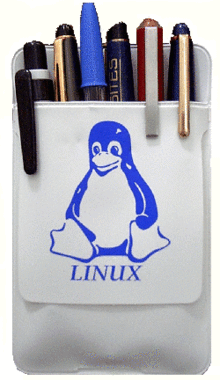Pocket protector

A pocket protector is a sheath designed to hold writing instruments and other small implements, such as slide rules, while preventing them from damaging the wearer's shirt pocket (e.g., by tearing or staining by a leaky pen). The pocket protector is designed to fit neatly inside the breast pocket of a shirt, and may accommodate pens, pencils, screwdrivers, small slide rules, and various other small items. A flap overlapping the pocket exterior helps to secure the pocket protector in place.
The pocket protector was invented during World War II by Hurley Smith while he was working in Buffalo, New York. He was awarded US 2417786 for the device on March 18, 1947; the patent was filed on June 3, 1943.[1]
A competing claim for the invention came from Long Island plastics magnate Gerson Strassberg around 1952. Strassberg was working on plastic sleeves for bankbooks. One day he placed one that he was working on into his shirt pocket while he took a phone call. When he noticed it there, he realized it would make a great product.[2]
Originally fashioned from polyvinyl chloride (PVC), pocket protectors were first marketed toward corporations as branded promotional fare. However, a more general market for the product soon arose, made up of students, engineers (prominently mechanical), and white-collar workers in sundry fields. The accessory has become part of a "nerd" or "geek" fashion stereotype, probably because of its association with engineers or students.
Notes
- ↑ Madea, Jeanette. "History of the Pocket Protector". IEEE History Center. Archived from the original on May 15, 2007. Retrieved September 17, 2009.
- ↑ Murray, Caryn. "The Pocket Protector Was His Baby". Orlando Sentinel. Retrieved September 27, 2010.
References
- Slatalla, Michelle. "Classic Nerdwear; Pocket Protector, Image Projector". New York Times 24 June 1999.
External links
-
 Media related to Pocket protectors at Wikimedia Commons
Media related to Pocket protectors at Wikimedia Commons - Webseum of Pocket Protectors